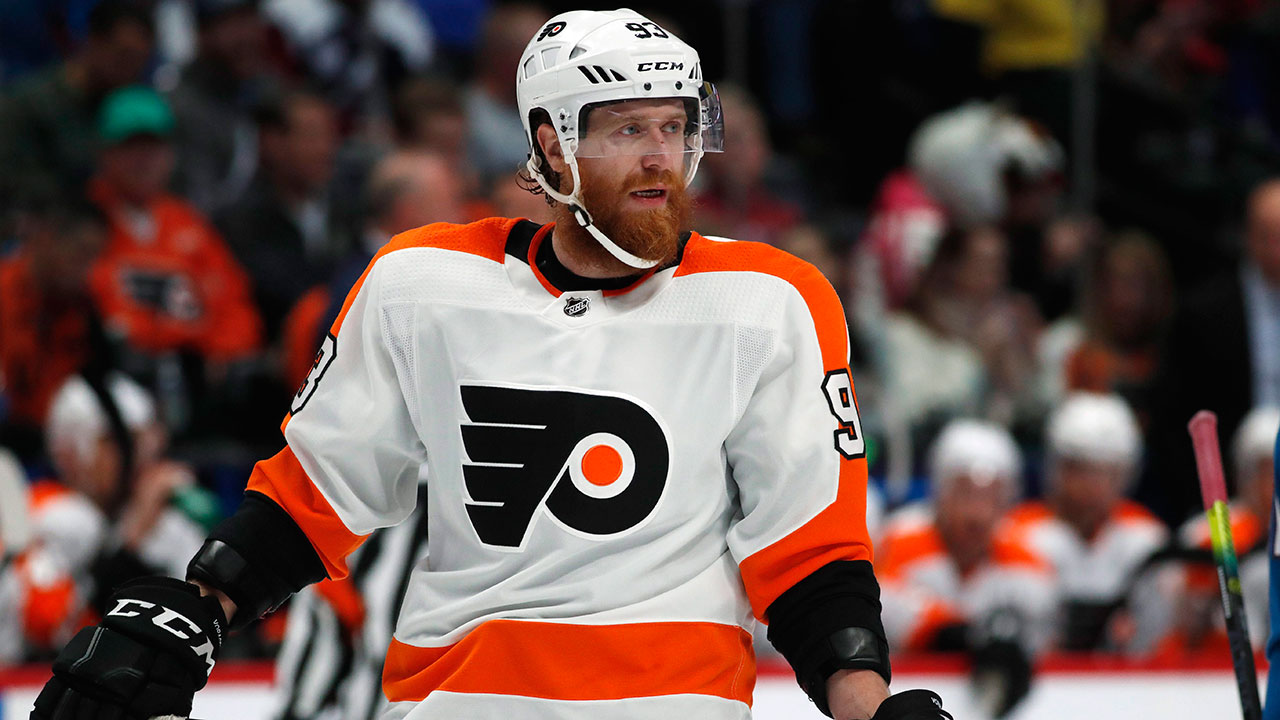The NHL pre-season schedule is now four days old, which means two things. One, you’re already sick of pre-season hockey. And two, it’s a good time to make some New Season’s Resolutions.
These days, everyone in the hockey world is all about being the best version of themselves. The players are in the best shape of their lives, the coaches are convinced that they’ve got it all figured out, and even the team Twitter accounts haven’t burned through all their GIFs quite yet. As fans, we might as well join in. And that means a little self-improvement in the form of some old-fashioned resolutions.
[relatedlinks]
As always, feel free to come up with your own. But if you’re looking for inspiration, here are a few suggestions that I think many of us could find some value in.
Let’s all wait a bit before we freak out over the faceoff-violation rule
The new rule — or more specifically, the new emphasis on calling the existing rule — is already getting decidedly mixed reviews from fans. Monday night’s Senators/Leafs game in Ottawa featured three early faceoff violations, accompanied by plenty of puzzled looks from players and coaches.
It sure seems like the league has done it again, where “it” is coming up with a solution to something nobody really thought was a problem. The crackdown on slashing makes sense; guys were getting hurt, and it was impacting the quality of play. But not one fan has ever watched an NHL game and come away thinking, “That was OK, but I really wish the linesman took longer to drop the puck.” And yet somehow, here we are.
That said, let’s wait until we see the rule actually called in the regular season before we overreact. Sure, they’ll call it a ton in the pre-season because that’s what the pre-season is for. But maybe the players will adjust by opening night. Or, more likely, maybe the officials will ease way up once the games actually matter.
After all, do you think some linesman – not the referee, remember, but a linesman – really wants to be calling multiple power plays every night? Pulling the occasional look-at-me act before a draw is one thing, but here’s betting that most of these guys would rather eat their whistle than make a borderline penalty call that decides a game.
True, there have been other “one toe in the wrong place” rules before, like the old skate-in-crease debacle or the current offside challenges, and they stuck around. But there’s a key difference – those were subject to video review, meaning there really wasn’t room for an official to use their judgment to overlook a minor violation. That won’t apply to faceoff calls, so common sense can kick in and officials can let a few things slide.
Or maybe not. Maybe we’ll get into the season and still be seeing these things called all the time. If so, we can complain then. But until then, let’s try to stay calm.
Let’s start calling out GMs on trade timing
Every now and then a GM finds himself under pressure to make a trade, but can’t quite get a deal done. If they try to tell us they don’t need to make a move because their team is already good enough, fans and media will dig into that claim to see if it’s true. If they try to argue that other teams aren’t offering fair value, we’ll turn to the insiders to find out if they have a point.
But when a GM claims that they’re not making a move right now because they’ll be able to swing a better deal at some point in the future, we all just kind of shrug. OK, we basically say, that makes sense. You’re off the hook.
The weird thing about this trick is that it works at any time. There are basically five major windows for making a trade in the NHL: the draft weekend, the rest of the off-season, training camp, the regular season, and the trade deadline. And as we’ve pointed out before, today’s GMs have realized that they can always get away with kicking the can down the road to the next stop.
It’s a familiar dance. We’ll get a deal done at the deadline. Wait, maybe hold off until the off-season. Actually, let’s see where we are once the season gets going. Whoops, guess we’d better wait for the deadline. And on and on it goes. To hear them tell it, a GM’s trading calendar is basically Escher’s staircase, where everything gets easier the longer you wait.
And it always works on us. Until now, because Joe Sakic and the Colorado Avalanche should have finally driven a stake through the heart of this particular excuse.
The Matt Duchene situation is a mess. It’s been clear that the Avs were going to move him for over a year now. And yet, we’ve been repeatedly told that the time wasn’t quite right. Give them another few weeks or months. The market will open up by then.
Except it hasn’t, and now Duchene is miserable and mumbling about a holdout. By constantly waiting for a better scenario that was surely just around the corner, the Avalanche have backed themselves into a corner and seem to be running out of options.
That doesn’t mean that being patient is always a mistake. But it does mean we should start pushing back on the timing argument, just like we would on any other excuse a GM offered up. It’s perfectly valid to ask questions like “What makes you so sure that the market will be better down the road, and not worse? What happens if you’re wrong? Do you have a backup plan?”
And Joe Sakic and the Avalanche have proven it.
[snippet id=3317857]
Let’s go easy on “It’s still early”
Like most resolutions, we’ll probably break all of these within a month of making them. So let’s pick one that we can get some use out of over those first few weeks.
Pretty soon, the regular season will begin, and things will start happening. And as fans, we’ll react to those things. Whether it’s a hot start here or a prolonged slump there, we’ll pick it apart and overanalyze it, because that’s what we do.
And through it all, you can count on being lectured about caring about any of it, because “it’s still early.”
Well, yeah. Nobody is disputing this. We’re all familiar with the concept of time. We understand that no matter what happens in October, there’s plenty of runway left in the season for everything to sort itself out, and that most of this will be long-forgotten by April.
But here’s the thing: None of us seem to be in possession of a time machine, so skipping ahead to when it’s not early anymore isn’t really an option. We could all agree to ignore the league until Christmas, but that doesn’t seem like it would be all that much fun. So we’ll work with what we have, which admittedly isn’t much. Sure, we could append an “although it’s still early” disclaimer onto literally everything we say for the next month or two, but why don’t we go ahead and just assume that it’s implied.
When we’re a few games into the season and you hear somebody trying to talk about hockey, resist the urge to be “It’s Still Early” Guy. Nobody likes that guy.
Let’s get real about depth
Some NHL teams are good and some aren’t. Everyone understands this, including even the most optimistic homers. Sometimes it’s just not your year, and you know you’d sound silly trying to claim that it was.
But here’s the good news: Even if your team is bad, you can still claim that they’re deep.
According to fans, literally every NHL team is swimming in depth. That’s because, when it comes to arguing that a team is deep, you apparently get to count everyone with a pulse.
Are there eight wingers in training camp who could conceivably win a job on the fourth line? Congratulations, you’re deep on the wing.
Have a few of those guys played centre at some point in their (lengthy) minor-league careers? Cool, you’re deep down the middle, too.
Are there four guys in the entire organization who know how to strap on goalie pads without at least one of them being upside down? That’s some impressive goaltending depth.
Some teams really do have depth. The Calgary Flames and Nashville Predators have deep blue lines. Your team, however, has a half-dozen castoffs and career minor leaguers who could probably handle the seventh defenceman’s role. Unfortunately, some of them are going to end up playing in the top four. That’s not depth.
And this holds especially true when it comes to prospects. Sure, some fans will tell you, their team may not have any blue-chip studs on the way. But the system is deep. Look, here’s a list of the organization’s 10 best prospects, and it has 10 whole guys on it!
You’re supposed to have prospects. That’s what the draft is for. Unless your team went full 1983 St. Louis Blues for the last few years and sat out entirely, you’re going to have a few young guys milling around somewhere. That doesn’t automatically translate to a deep system unless we’re defining the term in a way where it doesn’t mean anything. Which is what we seem to be doing.
And on the topic of defining things…
Let’s be clear with those press-box tweets
This last one’s for you, beat reporters who are out there at NHL rinks around the continent waiting to tweet out any bit of breaking news. It’s an often-thankless job, but it needs to be done, and we appreciate you.
Well, as long as your tweets make sense. Which they sometimes don’t.
See, getting all the required information into 140 characters can be tricky, and we all understand that you’re going to miss some occasional nuance. That’s fine. What’s not fine is when you accidentally tweet something that could have two different meanings depending on how it’s read. And that’s especially true when those meanings are complete opposites of each other.
For example, let’s say there’s a big game tonight and a key player is questionable with an injury. He might play, he might not, and we won’t know until the official lineups come in. We’re all on the edge of our seats waiting for news. And that’s when you tweet out: “Johnny McSuperstar is out for warmup.”
Um… what? What does that mean? Is he “out,” as in he’s out there warming up? Or is he “out,” as in he’s not going to be in the lineup? That’s kind of an important distinction. Brevity is the soul of wit and all that, and we certainly appreciate your ability to keep it short, but maybe toss in an extra word or two so the rest of have some idea what you’re talking about.
Or take a related scenario, where a player has been fighting through an injury that’s making it difficult for them to play or even practise. Suddenly, we get a game-day skate update from you that the player is “down on the ice.” You probably mean that they’re on the ice, you know, down there somewhere, as opposed to up here with you. But instead, we all get a vision of them actually being down on the ice, writhing around in pain with what’s clearly a career-ending injury.
Speaking of ice, here’s one more. It’s late in a close game, which you’re furiously live-tweeting to your followers because of course you are. The visiting team has pulled its goalie. Tensions are high. And inevitably, that’s when you tweet out an update along the lines of “and the home team ices it late.”
Uh, ices what? The puck, meaning the other team is going to get an offensive-zone faceoff? Or the game, meaning it’s over? Nouns are your friend. Some of us are gambling on this game personally invested in the outcome here, so help us out.
[snippet ID=3322139]
Let’s learn to love the power-play drop pass
We might as well, since it’s basically mandatory now. It seems like every team has decided that the best way to enter the offensive zone when you have a power play is with a neutral-zone drop pass.
It didn’t use to be like this. [Hikes up pants and begins pointing cane at younger readers.] There used to be a time when if you had a power play, you just got the puck into the other team’s zone any way you could and then worried about getting set up. But these days, zone entries are serious business, and defenders are making it harder to gain the blue line. So teams have decided to run a set play, and that set play is the drop pass.
It goes something like this. The team with the man advantage collects the puck in their own zone and heads down the ice at medium speed, backing the penalty killers up with them. As they approach the blue line, they drop the puck back to a trailing man, who can then hit the blue line at full speed.
Sometimes it’s a short pass. Sometimes they hammer it all the way back into the defensive zone, which always makes it look like they accidentally hit the wrong button in a video game. Either way, once the trailer has the puck with a full head of steam, he can… well, usually he can gain the zone and then realize he’s all alone because his other four teammates had to come to a complete stop at the blue line to wait for him. Look, we’re still working out some of the kinks.
The point is, the play is everywhere now, so we might as well learn to appreciate it. Hockey fans have spent years annoyingly yelling “SHOOOOOOT” during every power play. It’s time for a modern update. I’m going to try to get “NOOOOOOT-RAL ZONE DROP PASS” to catch on, although I acknowledge it might be a little wordy. But we’re going to need something, at least until the collective brain power of 31 NHL coaches can come up with a second play.









